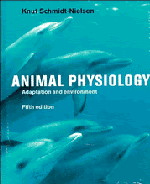What has phage lambda ever done for us?
 Murray and Gann published an essay in this month's Current Biology titled "What has phage lambda ever done for us?" Since my current study organism is phage lambda, naturally I was interested. The essay is informative and interesting and, for those who have institutional access, I urge you take a gander at it for your own edification.
Murray and Gann published an essay in this month's Current Biology titled "What has phage lambda ever done for us?" Since my current study organism is phage lambda, naturally I was interested. The essay is informative and interesting and, for those who have institutional access, I urge you take a gander at it for your own edification.
Bacteriophage lambda was first discovered in 1951 by Esther Lederberg (wife of Nobelist Joshua Lederberg and probably deserving of a Nobel in her own right, but that's another story). Lambda was immediately interesting to the burgeoning molecular biology community because it propagates by two alternative pathways: lytic and lysogenic. In the lytic cycle, the phage's DNA enters an E. coli cell, induces the cell to produce phage progeny, then subsequently causes the cell to lyse (break open) releasing the contents into the surrounding media. By contrast, the lysogenic cycle is largely harmless, possibly even beneficial, to the cell. Here the phage's DNA enters the cell whereupon it is integrated into the cell's own DNA. As the cell replicates, the phage replicates as well. How cool is that?
Murray and Gann highlight where phage lambda was used as a model organism in many major biological discoveries. Here is a ^not so^ brief listing:
* gene regulation (Lwoff, Jacob and Monod 1961; Roberts 1969; Guarneros and Galindo 1979)
* DNA recognition and cooperative binding (Ptashne 1967)
* genetic fine structure (Benzer 1957)
* messenger RNA (Volkin and Astrachan 1956, 1957)
* acquisition and loss of genes from genomes (Campbell 1959, 1962)
* triplet nature of DNA code (Crick, Barnett, Brenner and Watts-Tobin 1961)
* restriction and modification (Dussoix and Arber 1962)
* DNA and protein are colinear (Sarabhai, Stretton, Brenner and Bolle 1964)
* DNA ligase (Gellert 1967)
* epigenetic gene regulation (Ptashne 2004)
* chaperones and protein folding (Georgeopoulos, Hendrix, Casjens and Kaiser 1973)
* repression and activation (i.e. turning genes on and off, Ptashne 2004)
* molecular basis of DNA recombination (Meselson and Weigle 1959, 1961)
That's quite a list. And it is nowhere near being exhaustive. Phage lambda has proven uniquely malleable in the laboratory and has illuminated large facets of previously hidden knowledge to biologists. Today lambda is still being used in many laboratories, which is testament to its enduring legacy.
The photo depicts Ur-Lambda (the father of all laboratory lambda phages); it's a lambda with LEGS! *ahem* tail fibers. The Electron Microscopy image was taken by Bob Duda at the Pittsburgh Bacteriophage Institute.


























